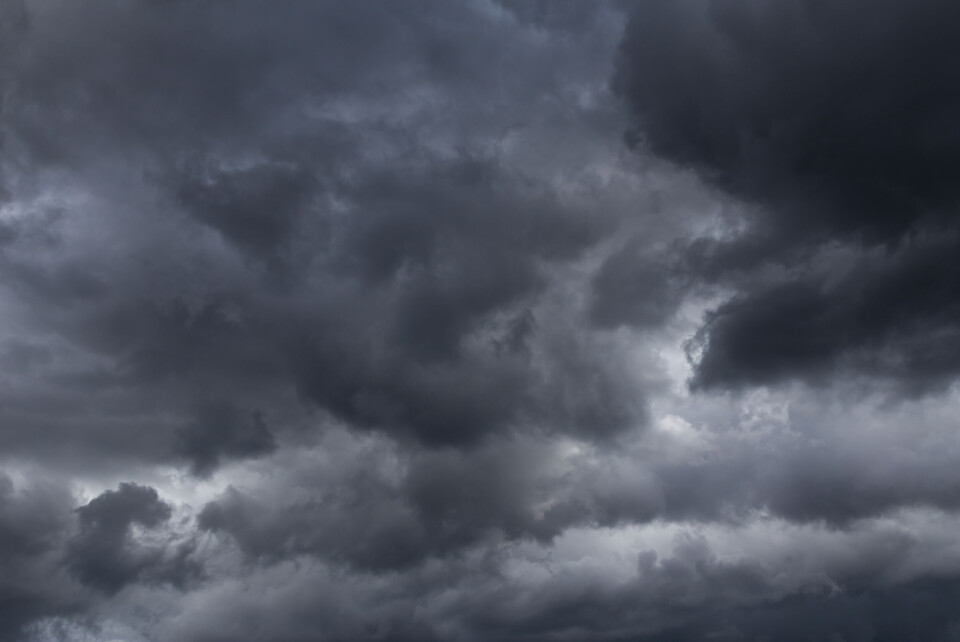-
Many Société Générale customers to be charged additional fees from April
There is some good news for international banking and instant transfers, however
-
Why gas prices in France are rising in April - and by how much
It comes after six consecutive monthly rises. Try these tips to reduce your bills
-
New notaire data suggests easing of Paris property crisis
Property experts have talked of ‘easing pressure’ and ‘breathing space’ after a four-year slump
South of France prepares for violent storms
The worst affected areas could see winds of up to 100km/h and rainfall could reach 120mm per hour

There are eight departments in southern France are being placed under an orange storm alert today (August 16), as last week’s heatwave gives way to unsettled weather conditions.
🔶 8 dpts en #vigilanceOrange
— VigiMétéoFrance (@VigiMeteoFrance) August 16, 2022
Restez informés sur https://t.co/rJ24zzmmy4 pic.twitter.com/XyfppehZJH
Aveyron, Tarn, Aude, Hérault and Gard were put under the orange alert this morning, and joined by Vaucluse, Var and Bouches-du-Rhône as a result of the latest update at 16:00. Every other metropolitan department is already under a yellow storm alert.
National weather service Météo France has described today’s weather as being “severely stormy” and requiring a “particular vigilance” from residents.
Rain arrived from the north west and spread to the south west over the course of the morning. The storm was predicted to grow more violent this afternoon, reaching the Massif Central and areas further east.
People should expect significant thunder and lightning, hail showers, wind gusts of 80-100km/h and heavy rainfall, with 20-40mm coming down over an hour in some areas.
Around Hérault and Gard, the rainfall could reach 120mm per hour in certain places.
The storms are expected to abate this evening in most areas, although in the west of Occitanie, new weather systems could arrive at the end of the afternoon, lasting into the night.
This storm could shift eastwards towards the Provence-Alpes-Côte d’Azur region as the night wears on.
There are concerns that this weather event could lead to flash flooding, as three weeks to one month’s worth of rainfall comes down over the next couple of days, and is unable to easily penetrate France’s dry soils.
Read more: We must prepare homes now for flash floods, says French fire chief
Do I need to do anything?
If you are in an area affected by an orange storm alert, Météo France advises that you:
- Keep away from trees and waterways
- Shelter in a sturdy building
- Keep up to date with the situation
- Avoid going out if possible
- Secure possessions which could be blown or washed away.
‘We’re expecting the worst’
The deputy mayor of Alès (Gard), Christian Rivenq, has said: “So as to avoid taking any risks, we are preparing for the worst. We are hoping that the reality will be less than the forecast.
“This is arriving a little early in the season because of the intense heat [of the last few weeks], as generally this type of event is expected from September 10,” he told Franceinfo.
He added that Alès’ crisis management plan has been activated and that staff were on hand to follow the evolution of the situation.
“We are lucky to have tools that we did not have 20 years ago,” he said.
“We are cleaning drains because with the drought, leaves have fallen. We must clean so that the water system can function at full capacity in the case of a storm, to prevent the flooding of cellars and ground floor spaces.
“We are also working on parks. And we are carrying out a lot of preventative [work], warning people.”
Risk of flash flooding
Agricultural climate expert, Serge Zaka, has said that: “The very dry earth will act like a slide more than a sponge,” and “provoke flooding”, during the storms today.
“We need several days of rain to enable the crust [which forms on the ground as a result of dry weather] to disappear and for water to penetrate the soil.
“So far in Mediterranean regions, there has not been enough rain to get rid of this crust.”
The storms expected today are often called épisodes méditerranéens, which occur when stormy weather systems are made worse by warm sea water and local winds.
“These are the storms that we see very regularly in September and local people are used to them,” Mr Zaka added.
“Épisodes cévenols work in the same way, except that they happen on the Cévennes mountains, which can increase the intensity of the storms, as well as surface run-off and flooding.”
Mediterranean episodes are likely to be more severe this year, considering that the Mediterranean has reached extremely high temperatures this summer, 4-6C higher than usual.
Mr Zaka explained that the sea acts as “heating oil” which “feeds the storms, as it is there that they find their energy.
“The Groupe d’experts intergouvernemental sur l’évolution du climat recently revealed that an increase in atmospheric temperatures of 1C means 9% more water vapour in the atmosphere. More water vapour logically means more rain.”
Storms cause flooding in several departments
Departments including Aveyron and Var were already hit by storms over the weekend, with wind and hail taking some residents by surprise.
Yesterday (August 15), the owners of an Aveyron campsite found that water had been cascading into their restaurant, and that camper vans had been rendered unusable.
In Brignoles (Var), the local weather station recorded winds of 100km/h and 15mm of rainwater falling within a 15 minute period.
Related articles
Cooler temperatures and storms replace heatwave in France
French garden: choose drought tolerant daisies and echinacea
Ragweed pollen allergies arrive early in France this year
























